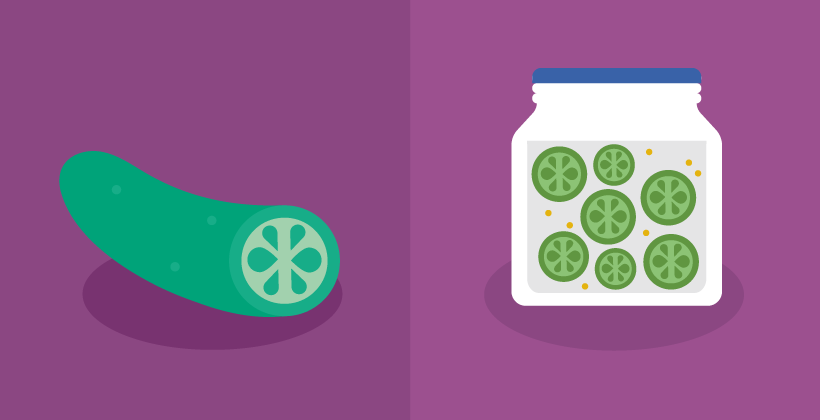Is a Pepper a Fruit or a Vegetable and Why?
Last Updated : 04 March 2020What do the words bell, sweet, jalapeno, shishito, pimento and poblano have in common? They are all different types of peppers! Some tickle your taste buds with sweetness, others put your mouth on fire. When it comes down to it, do you know if the pepper is a fruit or a vegetable?
Look no further, because the answer is, peppers are technically both! While fruit and vegetables both count as part of our recommended 5-a-day, fruit and vegetables have distinct differences. However, these can depend on whether you’re talking to a botanist, who uses the botanical definition or a nutritionist or chef, who will most likely use the culinary definition.
The botanical classification: Peppers are fruit.
A botanist would use the botanical classification, which is based on the plant’s physiological characteristics, like the structure, function and organisation of the plant.1 Therefore, botanically speaking, a ‘fruit’ is the seed-bearing product that grows from the ovary of a flowering plant or, in other words, a fruit is the plant's way of spreading its’ seeds.2 A botanical fruit would have at least one seed and grow from the flower of the plant.1 With this definition in mind, peppers are classified as fruit because they contain tiny seeds in the middle and grow from the flower of the pepper plant.
A ‘vegetable’ in botanical terms on the other hand, does not have a set definition but is more of a general term encompassing all other edible aspects of the plant, the roots, stems and leaves.1 So, putting our botany caps on, we would classify foods like apples, strawberries and cherries as fruit, including peppers!
The Culinary Classification: Peppers are vegetables.
A nutritionist, chef or even your grandma, would use the culinary classification system, that defines fruit and vegetables in a slightly different manner, basing it on the way the plants are used and their flavour profiles.1 Culinary speaking, a ‘vegetable’ usually has a tougher texture, tastes blander and often requires cooking in dishes like stews, soups or stir-fries.1,2 Whereas, a ‘fruit’ has a soft texture, tends to be either sweet or tart and is often enjoyed raw or in desserts or jams. 1,2
Peppers can be crunchy, refreshing and enjoyed raw. Yet, we also prepare peppers in savoury dishes like stews or in fajitas, which is why we usually classify peppers as vegetables.

Figure 1. Botanical vs culinary definition of a pepper
Botanical vs Culinary Classification
So, why can we classify peppers in two different ways, when it confuses us all? These definitions have their own purposes. For example, the botanical classification is useful for a botanist when they want to discover the origins of peppers, help them identify different varieties of peppers, or understand how to grow and harvest different species of peppers.1
The culinary definition may be more useful for the general public, nutritionists and chefs because the foods that are from the same botanical family, may not have the same nutritional compositions. For example, cantaloupe melons, watermelons, butternut squash, cucumbers and pumpkins all belong to the same botanical family but have different nutritional compositions. 1
Other botanical fruit that are culinarily considered vegetables: avocado, olives, pumpkin, tomato, sweecorn, courgette, cucumber, green peas, chili, aubergine.

Figure 2. Botanical fruit that are culinary vegetables
Peppers are part of your 5-a-day
For the 5-a-day recommendations, peppers are classified as a vegetable, which is the culinary definition, because that is how most people learn about fruit and vegetables. One adult portion of a pepper is half a pepper, remember to eat a wide variety of fruit and vegetables so you can reach your daily 5-a-day. 3

Figure 3. Portion size of peppers
Summary – Peppers are both fruit and vegetables!
To summarise, peppers are usually prepared in salads, soups or stir fries, despite botanically being a fruit, which is why they are often described as a vegetable from a culinary perspective. Who cares, though, when peppers taste as good as they do! We can all agree peppers are easy, delicious snacks and are a healthy option for our diets, providing us with fibre, vitamins and minerals.
When do you think the best season for peppers is? Check out our article on seasonal fruit and vegetables by month in Europe!


